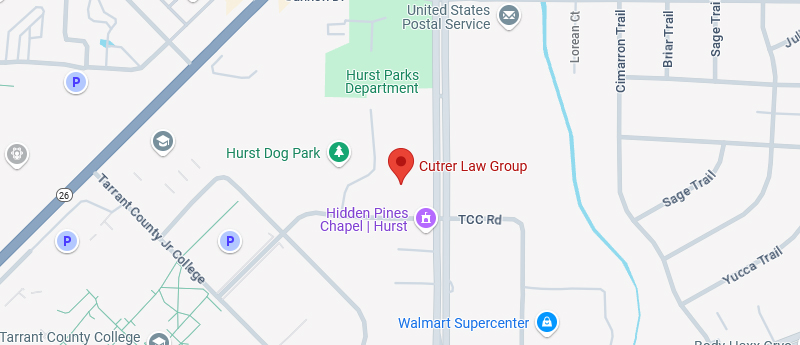What Rights Do Stepparents Have Under Texas Law?
The State of Texas has two laws that focus on the role of a stepparent and custody or visitation rights.
The first law states that a stepparent can file for custody or visitation when the biological parent or conservator has died. Under this law, the stepparent must have lived with the child for a minimum of six months. If the biological parent is still alive and a divorce is pursued, then a stepparent will typically have no rights to visitation or custody.
A more recent Texas law has passed that does not require the biological parent or conservator to be deceased. This law grants the right to file for custody or visitation to the adult who has taken care of or possessed the child for a minimum of six months.
Generally, however, a stepparent does not have any legal rights to stepchildren after the termination of a marriage to the legal parent.
What Factors Determine Custody or Visitation?
While it is not likely for a stepparent to be granted visitation or custody rights, family courts operate under what is in the best interest of the child. Depending on a variety of circumstances that may motivate extenuating custodial arrangements, a stepparent may be considered based on the following factors:
- The relationship between the stepchild and stepparent
- The amount of time the stepparent has been involved in the stepchild’s life
- How involved the stepparent is with the stepchild
- The amount of financial support offered by the stepparent to the stepchild
- The negative effects associated with removing the stepparent from the stepchild’s life
When Can a Stepparent Have Custody Rights?
Under Texas law, only two legal guardians are allowed for each child. This means that for a stepparent to be granted legal rights, one of the biological parents must give up his or her parental rights. The following situations may warrant custody to a stepparent:
- The biological parents of the child are unable to care for the child due to financial hardship, desertion, or death.
- The court has determined that the biological parent or parents are unfit.
- The court has determined that it is within the child’s best interest for custody to go to the stepparent.
Rights of Child Custodian
Legal rights that accompany custody of a child include:
- Deciding where the child resides
- Making healthcare decisions for the child
- Making educational decisions for the child, such as where the child will go to school
- Making financial decisions on the child’s behalf
- The ability to approve or deny military service applications
- The ability to receive child support payments
- Determining legal issues regarding the child
How is a Stepparent Adoption Case Initiated?
A stepparent adoption case depends on whether or not there is a relationship between the child and the parent who is not married to the stepparent.
If the child’s other parent is living and still has intact parental rights, then an Original Petition to Terminate Parent-Child Relationship and Stepparent Adoption must be filed.
If the child’s other parent is deceased or has terminated parental rights, then an Original Petition for Adoption must be filed.
Both of these types of adoption cases can be filed in the district court or statutory county court, which has jurisdiction over family law cases within the county where the child or petitioners reside.
What is Decided in a Stepparent Adoption Case?
If both biological parents have intact parental rights, then the case for terminating those rights will take place at the same time as the adoption proceedings.
For a stepparent adoption case or a combined parental termination and adoption case, the following rulings are considered:
- Termination of the parent-child relationship between the child and the other parent
- Termination of any other court-ordered relationship over the child
- Declaration of the adopted child as the son or daughter of the stepparent
- Appointment of the remaining parent and stepparents as managing conservators for the child
- Elimination of child support obligations for the terminated parent, unless child support arrears must still be paid
- Creation of the child’s right to inherit from the stepparent as a beneficiary
- Opportunity for legal name change, if requested
- Registration for a new birth certificate for the child by completing the Certificate of Adoption Form
What is Needed for a Successful Stepparent Adoption?
The first step towards adoption involves the eligibility of the child for adoption through the termination of parental rights for the other involved parent. Then, a judge will ensure that the requirements for adoption have been met. These requirements include:
- An adoption evaluation: Some courts will require the adoption evaluation to be completed by a member from the court’s list, so checking with the court clerk is necessary.
- Criminal history reports of the petitioners
- Signed and verified affidavit regarding compliance with the Interstate Compact on the Placement of Children
Other Adoption Requirements
While every case’s specific circumstances will vary depending on surrounding events, the following additional information may also be required:
- Appointing an attorney ad litem, guardian ad litem, or amicus attorney
- A child custody evaluation
- A CPS Central Registry Check
- A certificate from the Texas Paternity Registry stating that no other man claims paternity of the child
- A judge must decide that adoption is in the best interest of the child
Do I Need an Attorney?
If you are a stepparent who is trying to adopt or to gain visitation or custody rights of a child, your case will end up in court. To ensure the best outcome, call Cutrer Law Group today at 817-854-1651 or fill out a contact form for a free consultation.





 1845 Precinct Line Road
1845 Precinct Line Road info@akcfamilylaw.com
info@akcfamilylaw.com 817-854-1651
817-854-1651



